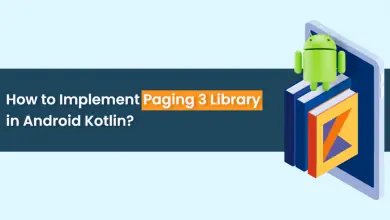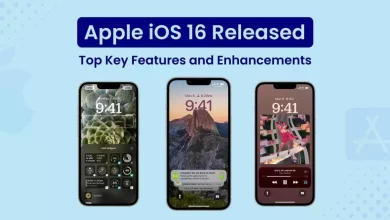How Much Does Augmented Reality App Development Cost?

What is the Augmented Reality App Development?
If you’re asking this question that means you are on the right path because AR app development is the biggest trend of the current year. And it’s not a joke, big companies are implementing their ideas using augmented reality technologies.
The question is now becoming pretty frequent as more and more researchers and surveys show positive trends in AR. We are a Niche Tech company for IoT and Augmented Reality and are available to answer your questions and provide as many details about augmented reality app development services.
What are the Requirement for AR App Development?
Your requirement documentation should include as many details as possible. Try to provide developers with all details about your product vision, its high-level features, and any external dependencies. It’s also good to provide some photos, sketches, or wireframes to illustrate their own requirements.
Documentation cost for AR app development: $320-$1000, and it takes 16-40 hours rates at $20 per hour to provide a prototype, whereas to build a complete application it can run for several thousand dollars.
Note: If you don’t have your AR app development requirement documentation ready it’s very difficult to make an accurate estimation of the cost to develop your augmented reality app.
The planning stage includes communication between a Business Analysis team (R&D) and the Client. They will solve all queries and discuss every important detail. This phase also includes:
- Creating a development plan, allocating roles to the team and the task of each person
- Setting timelines, deadlines, and milestones for each sprint
- Making detailed estimations of each sprint
How Much Does Augmented Reality App Development Cost?
We provide adequate time for coming up with a plan of execution, as planning is an important milestone of every application, it can take 5-30% of the time frame of the project, which inadvertently depends on the project size and complexity. It’s obvious, that large and complex projects take more time to estimate, so it is likely to cost more. Also, the cost to estimate a project similar to the existing application available in the market is easy.

This phase includes writing the development of code architecture and creating an application design. Both processes are closely related and interdependent on each other. So the main parts of each them are:
Development Process of AR App
- Design architecture
- 3rd party APIs integration
- Setup and basic controls
- Data storage
- Encryption/Description
- Scalability
The average time is 400-800 hours based on project complexity. So if suppose company charge you $20 per hour then it may cost you $8000-$16000.
Design Process of AR App
- Mockup creation
- 3D graphic models
- UI/UX design
- Visual design
- Animations
The average time is 200-300 hours. So if suppose company charge you $20 per hour then it may cost you $4000-$6000.
Of course, all the above costs are averaged and the duration of the development listed are only approximations. And the length of each part is highly dependent on each and every individual augmented reality application. It may cost you less than average sometimes, or go far beyond.
Rates of AR app development
When it comes to app development, there are a lot of different factors that go into the decision-making process. One of the most important is cost.

As per the above result, If you are looking to develop an application that takes around 600 hours to build, you can expect to pay approximately $80K if you hire developers from the US.
What Types of Augmented Reality Applications Exist?
There are so many common features that may be added to the AR app. The important feature of AR applications is augmented reality itself. There are 4 types of common types of AR apps available in the market.
Gyroscope-Based AR
The simplest way to create an AR application is the use of the device’s gyroscope. According to the information from the gyroscope of the device, the app can place virtual models around the user.
There is no SDK is required to do such simple features. Example: Vortex Planetarium – Astronomy app, it’s uses the gyroscope to place planets, constellations, and stars around a user.
The average time required is 200-300 hours for the app. So if suppose company charge you $20 per hour then it may cost you $4000-$6000.
Marker-Based AR
The second way to initiate augmented reality in the application is to use trigger-markers in the real world. Markers may be simple QR codes, icons, cards, images, or even movie or product posters. The device’s camera captures and identifies such kinds of triggers. The AR app then projects a specific AR model or media onto it.
These Marker-based technologies are pretty easy to develop and integrate into the app. However, most of the time is spent on setting triggers. Each trigger image should be designed, scanned, and integrated into the app individually.
There are a few SDKs like ARKit, Vuforia, Wikitude, Kudan, and Maxst that allow the creation of such types of features. Examples: Inkhunter app, this app using markers to project tattoo designs, Quiver app for 3D models, Layar app to scan printed media pictures and generate projections.
The average time required to complete such an app is around 250-400 hours. So if suppose company charge you $20 per hour then it may cost you $5000-$8000.
SLAM (Simultaneous Localization and Mapping)
The concept of SLAM was born in the 80s but only modern devices have enough capabilities and resources to support it. This technology is used by self-driving vehicles, drones, and the robotics industry. There are complex algorithms that integrate data from multiple sensors, calculate the user’s position and create a map of the unknown environment.
AR applications use this feature to place different 3D objects in real surroundings.
The advantage of SLAM technology is that it doesn’t require any trigger-markers. In this technology, virtual objects can react with different objects in the real world that appears on the scene. You also may use SLAM to build a 3D model of real objects by simply moving the camera around them.
ARKit, Wikitude, Kudan, and Maxst SDKs allow developers to create such kinds of features. Example: IKEA augmented reality app, which uses SLAM technology and allows users to place 3D models of furniture in a real environment.
The average time required is around 250-500 hours. So if suppose company charge you $20 per hour then it may cost you $5000-$10000.
Location-Based AR
Location-based AR apps use the device’s data from GPS, compass, and Wi-Fi to augment reality around a user by placing virtual models, media, text info or link in the real world. The user should be at the right location with a good internet connection to get the best AR experience of the app.
Wikitude SDK allows developers to create this type of feature. Examples: Pokemon GO, this app generates digital characters based on your device’s location and places them in a physical environment.
The average time required is around 400-800 hours. So if suppose company charge you $20 per hour then it may cost you $8000-$16000.
There are so many features that may also be added to AR applications. They can certainly enhance the user experience of the app. Additional features can make apps more flexible, featured, personalized, and secure. Each feature will take time to integrate and result in the increased budget cost of the app.
Along with augmented reality app development, such apps require some additional common features:
- Log-in
- Payment integration
- Support of several languages
- Analytics tools
- Chats or forums, etc.
- Backend integration
Depending on the number of these features, the cost of the final app varies a lot. The additional time begins with 24 hours and goes up to 200 hours.
There are also expenses related to testing, deployment, and post-release. Games and apps that need a high level of security require additional efforts. The deployment phase is about submitting it to the app store. Depending on application size and complexity, post-release expenses may vary from 10% to 30% of its total cost per year. App maintenance may include the app’s update, security patches, adding new features, and third-party fees.

Why Choose OneClick for AR App Development?
OneClick is the best choice for AR App development because we offer a full service solution, from idea to completion. We have extensive experience in AR technology and can help you develop a new application or improve an existing one.
We have experience with many different types of AR applications. Also, we can help you develop your idea into a fully-functional app that will work on any platform (iOS or Android).
Our expert team of developers are passionate about developing high-quality solutions that meet your business needs and exceed your expectations. We believe that effective communication is key to ensuring that all parties involved know what they need to do and when it needs to be done by. We will work closely with you throughout the development process so that your business goals are met with minimum disruption to your daily operations.
Wrapping Up
Mobile devices’ capabilities are becoming more and more advanced each year. It’s just a matter of time before people would start to use Augmented Reality for everyday routines. Therefore, better get ready and be one of the first AR products on the market at the moment customer interest explodes.
If you have any ideas to create an Augmented reality app, contact our sales team. Our team will contact you shortly after we get your inquiry.
Transform your business with our expert software development company. We deliver innovative solutions tailored to your needs for optimal growth





